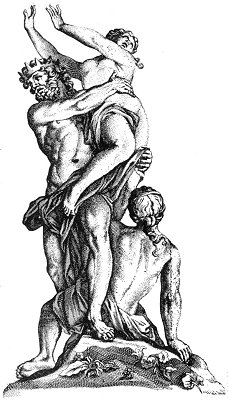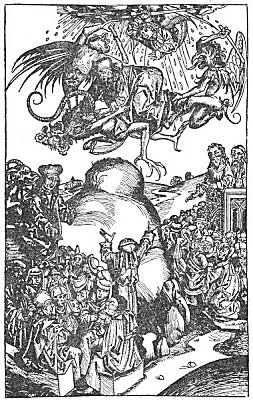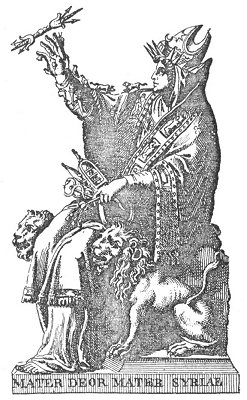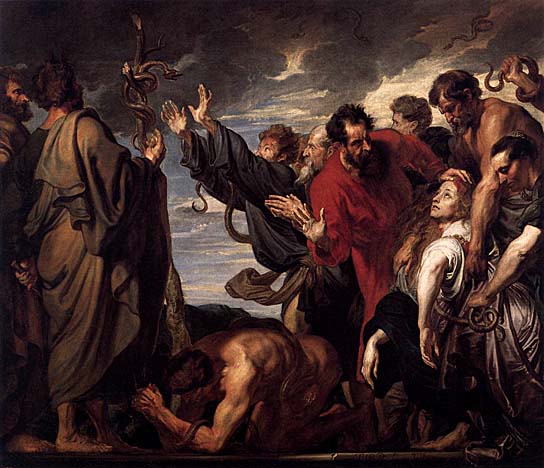“For, if the truth of God hath more abounded, through my lie unto his glory; why yet am I also judged as a sinner?” naively inquires Paul, the best and sincerest of all the apostles. And he then adds: “Let us do evil, that good may come!” (Romans iii. 7, 8). This is a confession which we are asked to believe as having been a direct inspiration from God! It explains, if it does not excuse, the maxim adopted later by the Church that “it is an act of virtue to deceive and lie, when by such means the interests of the Church might be promoted.” A maxim
Page 304
applied in its fullest sense by that accomplished professor in forgery, the Armenian Eusebius; or yet, that innocent-looking bible-kaleidoscopist — Irenaeus. And these men were followed by a whole army of pious assassins, who, in the meanwhile, had improved upon the system of deceit, by proclaiming that it was lawful even to kill, when by murder they could enforce the new religion. Theophilus, “that perpetual enemy of peace and virtue,” as the famous bishop was called; Cyril, Athanasius, the murderer of Arius, and a host of other canonized “Saints,” were all but too worthy successors of Saint Constantine, who drowned his wife in boiling water; butchered his little nephew; murdered, with his own pious hand, two of his brothers-in-law; killed his own son Crispus, bled to death several men and women, and smothered in a well an old monk. However, we are told by Eusebius that this Christian Emperor was rewarded by a vision of Christ himself, bearing his cross, who instructed him to march to other triumphs, inasmuch as he would always protect him!
It is under the shade of the Imperial standard, with its famous sign, “In hoc signo vinces,” that “visionary” Christianity, which had crept on since the days of Irenaenus, arrogantly proclaimed its rights in the full blaze of the sun. The Labarum had most probably furnished the model for the true cross, which was “miraculously,” and agreeably to the Imperial will, found a few years later. Nothing short of such a remarkable vision, impiously doubted by some severe critics — Dr. Lardner for one — and a fresh miracle to match, could have resulted in the finding of a cross where there had never before been one. Still, we have either to believe the phenomenon or dispute it at the risk of being treated as infidels; and this, notwithstanding that upon a careful computation we would find that the fragments of the “true Cross” had multiplied themselves even more miraculously than the five loaves in the invisible bakery, and the two fishes. In all cases like this, where miracles can be so conveniently called in, there is no room for dull fact. History must step out that fiction may step in.
If the alleged founder of the Christian religion is now, after the lapse of nineteen centuries, preached — more or less unsuccessfully however — in every corner of the globe, we are at liberty to think that the doctrines attributed to him would astonish and dismay him more than any one else. A system of deliberate falsification was adopted from the first. How determined Irenaeus was to crush truth and build up a Church of his own on the mangled remains of the seven primitive churches mentioned in the Revelation, may be inferred from his quarrel with Ptolemaeus. And this is again a case of evidence against which no blind faith can prevail. Ecclesiastical history assures us that Christ’s
Page 305
ministry was but of three years’ duration. There is a decided discrepancy on this point between the first three synoptics and the fourth gospel; but it was left for Irenaeus to show to Christian posterity that so early as A.D. 180 — the probable time when this Father wrote his works against heresies — even such pillars of the Church as himself either knew nothing certain about it, or deliberately lied and falsified dates to support their own views. So anxious was the worthy Father to meet every possible objection against his plans, that no falsehood, no sophistry, was too much for him. How are we to understand the following; and who is the falsifier in this case? The argument of Ptolemaeus was that Jesus was too young to have taught anything of much importance; adding that “Christ preached for one year only, and then suffered in the twelfth month.” In this Ptolemaeus was very little at variance with the gospels. But Irenaeus, carried by his object far beyond the limits of prudence, from a mere discrepancy between one and three years, makes it ten and even twenty years! “Destroying his (Christ’s) whole work, and robbing him of that age which is both necessary and more honorable than any other; that more advanced age, I mean, during which also, as a teacher, he excelled all others.” And then, having no certain data to furnish, he throws himself back on tradition, and claims that Christ had preached for over TEN years! (book ii., c. 22, pp. 4, 5). In another place he makes Jesus fifty years old.

Moe is the founder of GnosticWarrior.com. He is a father, husband, author, martial arts black belt, and an expert in Gnosticism, the occult, and esotericism.








